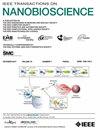A Novel Framework for Tongue Feature Extraction Framework Based on Sublingual Vein Segmentation
IF 4.4
4区 生物学
Q1 BIOCHEMICAL RESEARCH METHODS
引用次数: 0
Abstract
The features of the sublingual veins, including swelling, varicose patterns, and cyanosis, are pivotal in differentiating symptoms and selecting treatments in Traditional Chinese Medicine (TCM) tongue diagnosis. These features serve as a crucial reflection of the human blood circulation status. Nevertheless, the automatic and precise extraction of sublingual vein features remains a formidable challenge, constrained by the scarcity of datasets for sublingual images and the interference of noise from non-tongue and non-sublingual vein elements. In this paper, we present an innovative tongue feature extraction method that relies on focusing specifically on segmenting the sublingual vein rather than the entire tongue base. To achieve this, we have developed a sublingual vein segmentation framework utilizing a Polyp-PVT network, effectively eliminating noise from the surrounding regions of the sublingual vein. Furthermore, we pioneer the utilization of a transformer-based approach, such as the Swin-Transformer network, to extract sublingual vein features, leveraging the remarkable capabilities of transformer networks. To complement our methodology, we have constructed a comprehensive dataset of sublingual vein images, facilitating the segmentation and classification of sublingual veins. Experimental results have demonstrated that our tongue feature extraction method, coupled with sublingual vein segmentation, significantly outperforms existing tongue feature extraction techniques.基于舌下静脉分割的新型舌头特征提取框架
舌下静脉的特征,包括肿胀、静脉曲张和紫绀,是中医舌诊鉴别症状和选择治疗方法的关键。这些特征是人体血液循环状况的重要反映。然而,由于舌下图像数据集的稀缺以及非舌下和非舌下静脉元素噪声的干扰,舌下静脉特征的自动、精确提取仍然是一个巨大的挑战。在本文中,我们提出了一种创新的舌头特征提取方法,该方法依赖于专注于分割舌下静脉而不是整个舌根。为了实现这一目标,我们开发了一个利用息肉- pvt网络的舌下静脉分割框架,有效地消除了舌下静脉周围区域的噪声。此外,我们率先利用变压器为基础的方法,如天鹅变压器网络,提取舌下静脉特征,充分利用变压器网络的卓越能力。为了补充我们的方法,我们构建了一个完整的舌下静脉图像数据集,方便了舌下静脉的分割和分类。实验结果表明,结合舌下静脉分割的舌特征提取方法明显优于现有的舌特征提取技术。
本文章由计算机程序翻译,如有差异,请以英文原文为准。
求助全文
约1分钟内获得全文
求助全文
来源期刊

IEEE Transactions on NanoBioscience
工程技术-纳米科技
CiteScore
7.00
自引率
5.10%
发文量
197
审稿时长
>12 weeks
期刊介绍:
The IEEE Transactions on NanoBioscience reports on original, innovative and interdisciplinary work on all aspects of molecular systems, cellular systems, and tissues (including molecular electronics). Topics covered in the journal focus on a broad spectrum of aspects, both on foundations and on applications. Specifically, methods and techniques, experimental aspects, design and implementation, instrumentation and laboratory equipment, clinical aspects, hardware and software data acquisition and analysis and computer based modelling are covered (based on traditional or high performance computing - parallel computers or computer networks).
 求助内容:
求助内容: 应助结果提醒方式:
应助结果提醒方式:


